The road from Essaouira to El Jadida with stops in Safi and Azemmour – Morocco
The road from Essaouira to El Jadida – Safi
Short Description. After I left Essaouira, I had to go through a storm while driving along the Atlantic Coast. In Safi, the sky unclouded though, and I could explore the medina, the kasbah, and Colinne des Potiers. I stopped in Oualidia lagoon for lunch and then headed to El Jadida.
Long Description.
In the morning, the sky was cloudy and the forecasts were pretty uncertain. I had arrived at the Atlantic during the fall when the rains began after six months of dryness. If I had made the circuit through Morocco in the opposite direction, I would have first explored the Atlantic coast until the rains started, then the Sahara desert when the temperatures would have lowered a bit. Because of my choice, I had to deal with temperatures of 40 Celsius degrees in the desert and often rains alongside the Atlantic Ocean.
I felt like a princess at Riad Salmiya Dune and regretted I had to leave so soon. From Essaouira, I headed north on the road along the ocean coastline. The sky was cloudy and it rained from time to time. The wind also blew violently in the exposed places. When I reached a hilltop, it rained heavily and the wind blew so powerfully that I had to stop on the right side of the road. I waited for the storm to pass while the wind shook my car with power. Eventually, the thick clouds passed by and I could see a clear sky coming from the sea. Seagulls had gathered on the sandy beach I photographed from the car. The road passed several rural settlements surrounded by agricultural plots of land, then went parallel to the crops cultivated alongside the ocean, near the beach.
In Safi, the weather cleared, so I parked near Kechla – the former kasbah in the old city. When I tried to move the car to the parking lot of the kasbah, I couldn’t unlock the steering wheel. I had deliberately turned the wheels to prevent the car from being lifted for irregular parking. I was ready to ask for help when I suddenly managed to unlock the steering wheel, moved the car, and went to visit the kasbah.
Even though it was closed, the guard allowed me to explore Kechla – a kasbah with massive walls, ramps, bastions, shooting platforms, a mosque, and abandoned living quarters, including the National Ceramics Museum (also closed). After the visit, I gave some money to the man who guarded the kasbah and the parking lot (where only my car stood). In Morocco, you build up your relationships with little money.
Safi had one of Morocco’s largest modern ports, but it still held signs since the old city was an important port for the trans-Saharan trade between Marrakesh and Guinea. Bab Lamaasa was the main entrance gate to the fortified medina, a gate that emerged on the backdrop of the medina’s white and blue houses. The main, winding street – Rue du Souq, ran right through the middle of the medina, and several souqs (jewelry, clothes, food) branched from it a bit farther. I turned right onto Passage el-Bouiba leading to the Portuguese Cathedral. The Cathedral was a massive brick bell-tower that remained unfinished after the Portuguese fled from the city. Nearby, a man riding a bicycle stopped and asked me where I come from, and then wished me a pleasant visit.
I exited the medina somewhere near Bab Chaba – a gate around which locals sold pottery. Across the road, Colline des Potiers spread over an entire hill covered with pottery workshops and colorful ceramics. Potters glued ceramic pieces on the reddish or white houses and thus created a colorful design. Piles of tajine pots stood in the street while here and there, you could notice earth ovens for burning ceramics. A kid painted some freshly baked vases in the middle of the street.
After I left Safi, I stopped in Oualidia lagoon on my way to El Jadida. I went directly to the restaurant Maison de L´Ostrea II featuring fish specialties and an oyster farm. I ordered an oyster soup, delicious and expensive, however not hearty at all. So I rushed into a grilled fish platter to appease my hunger. Despite the pricey bill, I enjoyed my lunch looking at the calm and green lagoon – a peaceful scenery after the terrible morning storm. A sandy beach stretched behind the lagoon, then you could see the sea bordered by agricultural plots of land neatly cultivated. I would have liked to visit the oyster farm, but all waiters spoke only Arabic and a little French, so we didn’t understand each other at all.
Green plots of land cultivated in between lagoon and ocean bordered the road to El Jadida. In the evening, I arrived in El Jadida and went directly to the room I booked at Dar Aboulanwar. It was a modern villa set outside of the historic center, where I received a big, quiet room, exactly as I had requested.
The Portuguese city of El Jadida
Short Description. I explored all sights in the Portuguese city of El Jadida: the cistern, the ramps, as well as Bastion de L ‘Ange and Bastion de Saint Sebastian. In the afternoon, I stopped in the medina with graffiti in Azemmour and, eventually, I arrived in Casablanca in the evening.
Long Description.
The Portuguese city of Mazagan was small, with a few streets surrounded by mighty fortification walls. It was listed as a UNESCO heritage site because it was one of the first Portuguese fortified settlements on their way to explore the route from West Africa to India. Besides, it was proof of the cultural exchange between Europeans and Moroccans in the 16th and 17th centuries. After the Portuguese left, the fortress was renamed El Jadida (‘the New’). Even though many Jews came to live in the new city, they never had a Jewish quarter (mellah) like in other medinas.
Inside the fortifications, the Assumption Church in late Gothic style stood just opposite a mosque refurbished in a former lighthouse in al-Kanissa Square. The streets were wide enough for cars to get in, but pedestrians and a few shops dominated the alleys. Hotel Iglesia sat in a vast public square where nothing happened. It was only a parking lot, and people only passed by. Houses in the old city had several floors and were painted in yellow – the same color as the fortifications.
In the basement of a house, I went down to an old water cistern refurbished in former barracks where rainwater was collected through a roof opening. In the cistern, a thin layer of water reflected the vaulted ceiling supported by 12 sturdy pillars. A local bakery stood by the sea, near Porte de la Mer. Women brought the kneaded dough in the morning and came after the baked bread later in the afternoon. They knew which was their bread after the color or the cloth imprint in which they wrapped it.
The Portuguese city – an early example of Renaissance military architecture (adapted to the emergence of firearms), was built as a fortified colony on the Atlantic coast at the beginning of the 16th century. It featured cisterns, bastions, moats, and star-shaped ramparts. The section of the wall overlooking the sea connected the two most important bastions of the city (Bastion de L’Ange – Bastion de Saint Sebastian). The bastions overlooked both the sea and the city and had shooting platforms with old cannons, ramps, and observation points. At the end of the ramparts, you could find the synagogue with a baroque facade. Vegetation and rubbish invaded many areas, but the architectural value was obvious for a curious traveler.
Peddlers sold heaps of fruits and vegetables in the street opposite the Portuguese city. Clusters of figs and dates flooded the stalls, topped by huge pomegranates and flatbread. The elegant Avenue du-Suez ran along the sea and the wide beach – deserted at that time of the year. The boulevard featured imposing modernist-style buildings and slender palm trees flanking the lanes to the city exit.
A stop in the medina of Azemmour
On the way to Casablanca, I stopped in the medina of Azemmour – known for its artists who painted countless graffiti on the walls of the houses. The medina of Portuguese influence had fortification walls, whitewashed houses in different colors, and narrow winding alleys with suspended arches where locals hung clothes. However, the streets seemed pretty dirty, often pavementless, and many dwellings had exfoliated plaster. The fortifications in Place du Souk were impressive in size and even had modern amenities. The square was a bit deserted though, so I left quickly. Gates and colorful windows in the medina featured ingenious graffiti or frames decorated during the Portuguese times.
Mohammed Janati was weaving Berber shawls and carpets when I entered his shop in the medina. He immediately asked his daughter to serve me a glass of tea. He felt proud his shop had been listed in a guidebook about Morocco. Mohammed had opened it in Azzemour because the rent was lower than in Casablanca. He insisted I would return to stay in his big house. Also, he insisted on giving me a shawl (unclear whether in exchange for money or as a gift).
I left Azzemour and stopped the car in front of the medina, on the other side of the river. There, I enjoyed the fish leftovers from yesterday’s lunch in Oualidia. In Casablanca, I arrived at the peak hour of the afternoon, but I somehow succeeded through that infernal traffic. You moved if you dared to squeeze amidst other cars. At the traffic lights, beggars knocked on your car window and coursed you. I ignored all those things with patience and calm. Finally, I arrived at my hosts, and Coco and her husband, Mehdi, warmly welcomed me into their home. They were glad to meet me after talking so many times on the Internet.
If you want to read more about the road trip through Morocco, here are all the Travelogues from Morocco (x21).
Have you been to Morocco or plan to go there? Leave a comment below this post and tell me what you liked in Morocco or what you want to see there.
Want to subscribe to my travelogues? Just leave your email in the subscription form below, and you’ll be notified when I publish a new post.
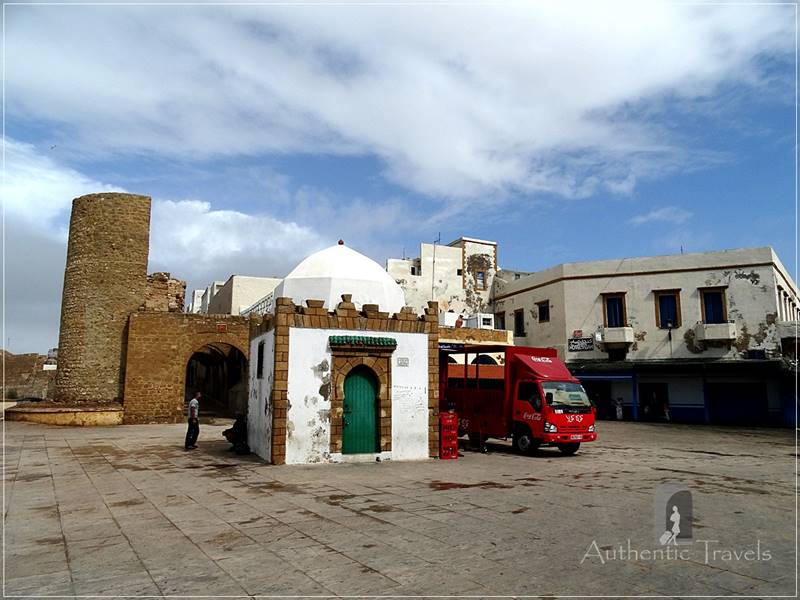

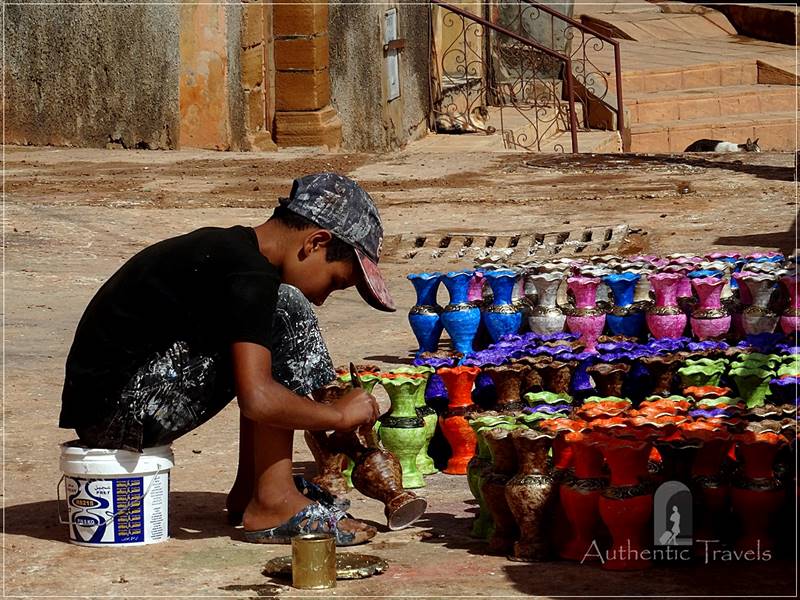
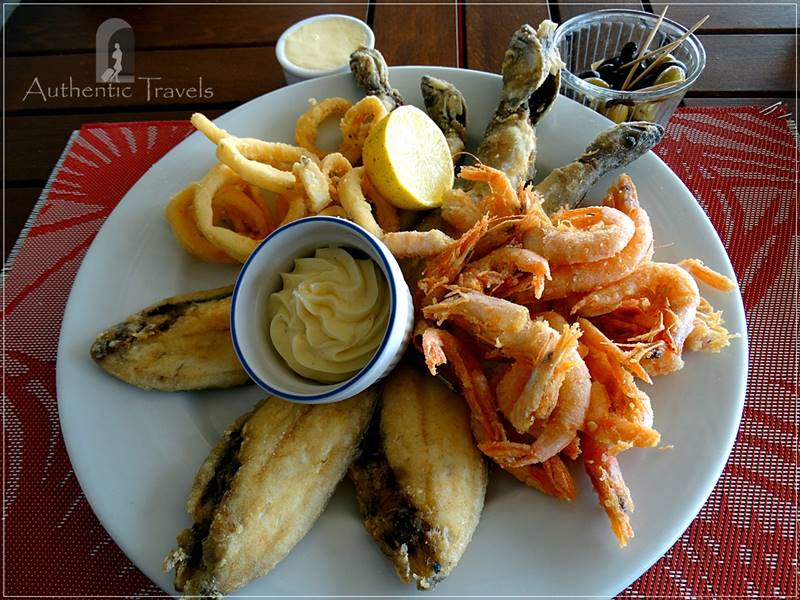
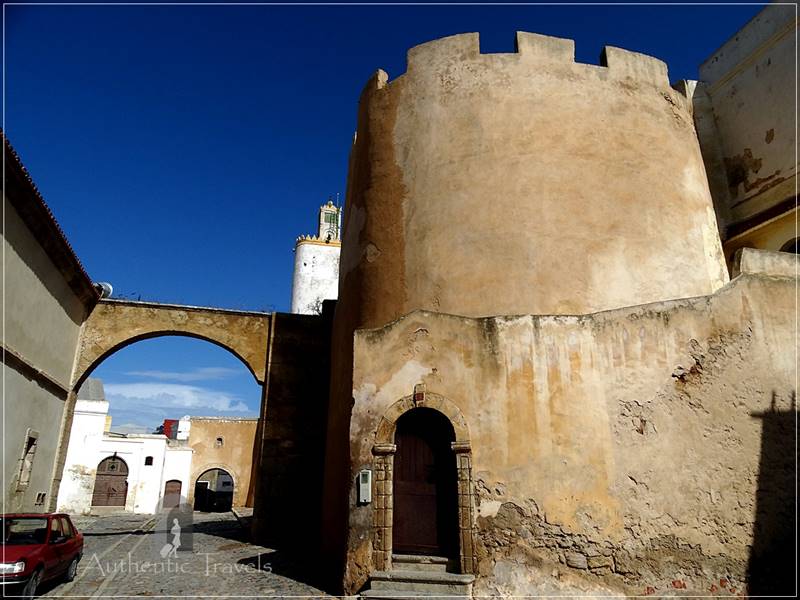
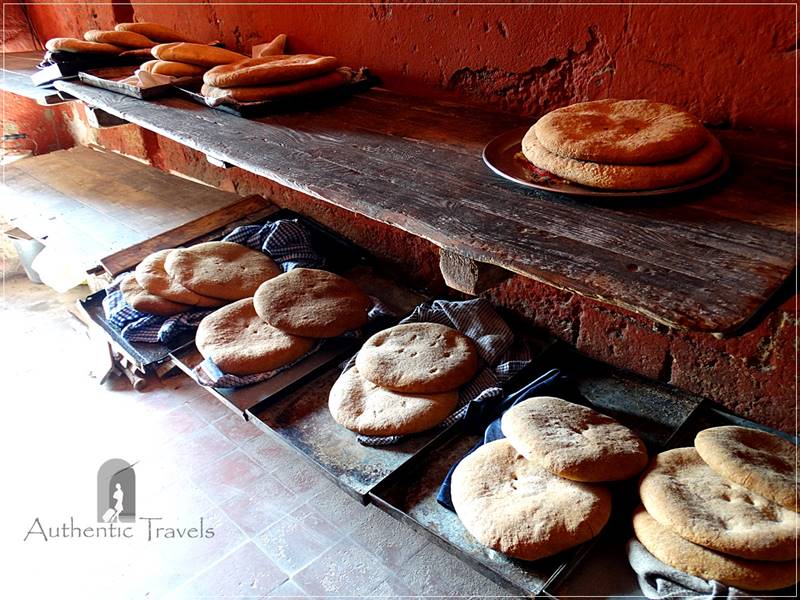
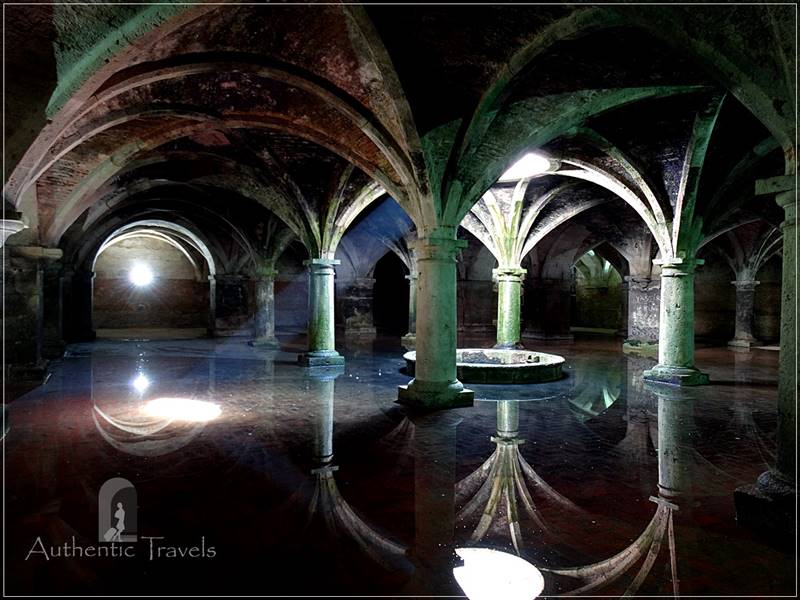
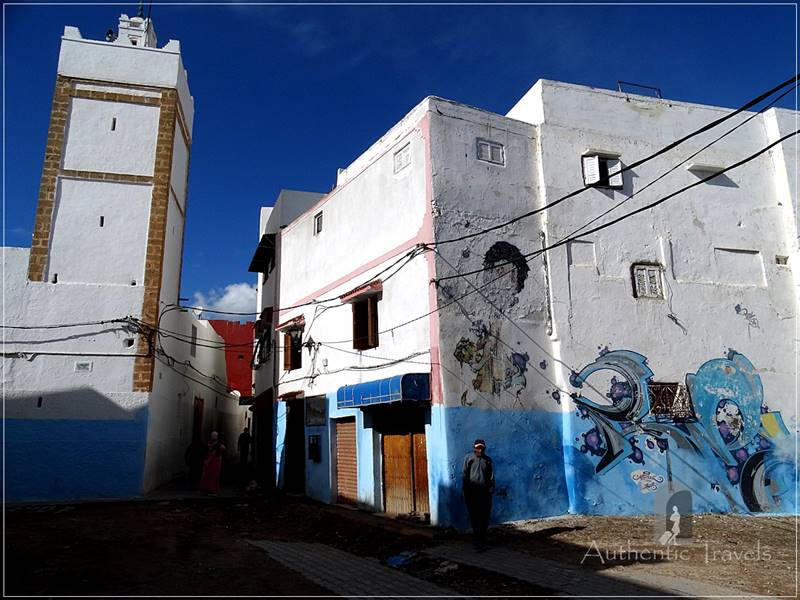
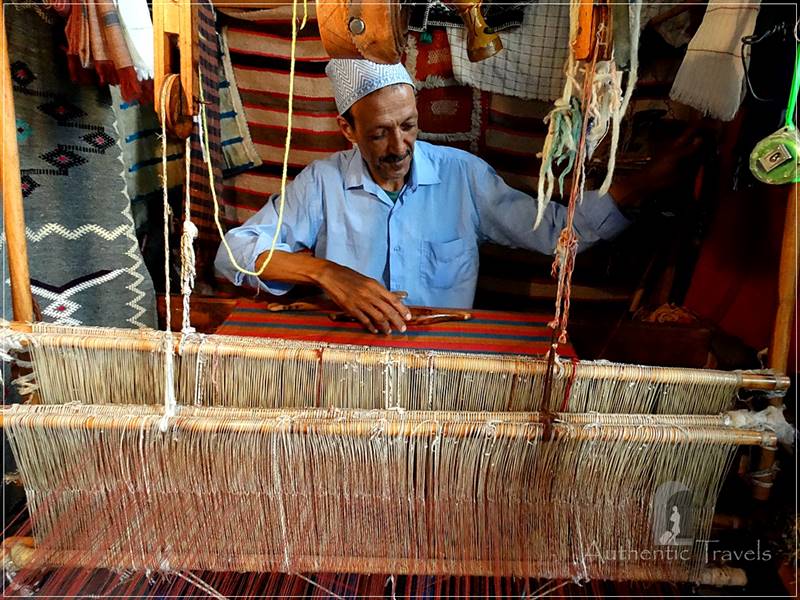
So nice to see a different kind of experiences on the Atlantic Coast. Eating fish delicacies. Visiting small Portuguese fortified towns. Traditional bakery (funny that the different families baked so little bread). Graffiti-painted houses and medina in Azemour. A weaving shop.
I would love to travel to Morocco. Out of the places that you mentioned, I would be interested in visiting El Jadida. You had me at fresh baked breads (they look like pita). One thing that crossed my mind was using a car for your main mode of transportation. What was your experience like driving there? Is public transportation easy to access? It sounds like Casablanca had more traffic compared to the other areas.
I had a rented car. The traffic in Morocco is not as terrible as it seems, except Casa. However, you have to pay attention at mules randomly crossing the street, people too. I mean it is the country of no rules or with little rules, but it is fun. I didn’t get any accident, so my experience was cool.
Only last night I was checking the price of flight tickets to Morocco, I want to visit the country in June. Thank you for the information. I would love to visit this beautiful country.
Unfortunately June may be extremely hot in Morocco, especially in the desert. Better go for spring or autumn.
Morocco is a very fascinating country. And I was happy to read your blog post. There are many beautiful photos and useful information here. Lunch looks really tasty. I love seafood!
When cooked by specialists, sea food is extremely delicious.
I like that your post shows a more authentic view of Morocco. Typically I see the treks through the desert and camels – which are also great – but I like being able to see a smaller town or city and the culture there. Seeing the local food specialties and how it’s prepared is always so interesting for me – it looks like you had the chance to experience that in person!
I love exploring all those off-the-beat places. I think they make the salt and pepper of any country.
I would love to travel to Morocco. But is having a car necessary? Is there any public transportation that can help me travel to various places in there like El Jadida in such case? I loved the baked bread, they look so fresh.
You can travel by public transportation to the major cities. However, it will take you more time than having your own car and more flexibility. But if you are not a great driver, maybe it is better to take the bus.
I’m hoping to visit Morocco this year or next, but I must say I never thought about checking out Safi or Azemmour. They both look and sound like beautiful places and I love how welcoming Mohammed was. The local bakery sounds like a gem too!
Well, they are off-the-beat. It worth stopping by if you have time. I stayed in Morocco for 6 weeks and I had a rented car, so I was very flexible.
ooh I’ll check out your travel diaries from Morocco, you bring such a fresh perspective to this beautiful country! I’ve been meaning to travel there for a while but the complicated visa process has been a deterrent so far. Need to make sure I plan a trip soon!
Good luck with your visa. And yes, please do come back from my travel journals. You will find lots off-the -beat places to add to your list.
This isn’t the normal Morocco post that I usually see of more touristy cities. It’s nice to get a new, fresh perspective on different cities there! I also very much love your photos. 🙂
Thank you. yes, I loved too those small cities even though the bigger cities are great too. But in this small cities you understand the true life in Morocco.